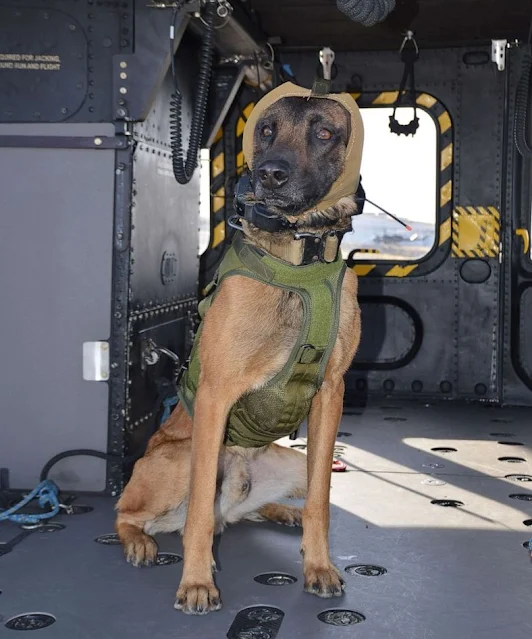Military canines are prone to hearing loss from exposure to loud noise, much like human people.
In the US military, highly trained canines serve an essential function. Around 1,600 dogs assist soldiers in carrying out crucial duties including locating targets and detecting bombs. For instance, an army dog called Conan gained notoriety earlier this year after helping special military troops assassinate ISIS leader Abu Bakr al-Baghdadi in Syria.
According to John Vandiver of Stars and Stripes, the Army is now working on new technologies that would better shield K-9 partners' ears while they're on the job. Army dogs routinely encounter loud noises during training and in the field, just like human employees do, and just like people, they are prone to both temporary and permanent hearing loss.
According to Stephen Lee, a senior researcher at the Military Research Study Office, "A brief helicopter flight can also affect a dog's hearing, resulting in degraded efficiency and inability to hear the handler's directions, which might impede the operation."
Military dogs may now use hearing protection equipment, but the canines have a difficult time wearing the gear since they are inflexible. Therefore, Peter Scheifele, executive director of the animal acoustics lab Fetchlab, and the clinical device business Zeteo Technology have been collaborating to create improved equipment with funding from the U.S. Army Medical Research and Development Command.
The Canine Auditory Protection System, sometimes known as CAPS, is a little hood constructed of acoustic absorption materials that muffles harsh noises. The hood is thin and flexible, making it easy to wear over a dog's head while protecting its ears from loud noises.
CAPS is just an inch thick, making it easy for dogs to maneuver in small areas and compatible with other safety equipment like eyewear.
The study team put CAPS to "extensive" wearability, use, and comfort tests on military and law enforcement canines, according to the Army Lab. According to tests conducted during chopper operations, there has been "a considerable reduction in temporary hearing loss."
The security personnel have already made technical investments to keep military dogs safe. For instance, Kyle Stock of Bloomberg reported in 2017 that the Department of Defense was investing on extremely lifelike dog mannequins—some of which included a pulse and an inside bag that simulated breathing—to assist in training medics to tend to injured dogs. not just the dogs' health is at stake; there is a great demand for specialist working canines, and getting one is pricey.
The demand for bomb-sniffing canines has increased globally as a result of terrorist attacks on public transit and tourism destinations, writes Supply. The State Division, private security firms, and border patrol agencies all pay up to $25,000 for dogs with highly trained noses on the open market.
The exact date that CAPS will undoubtedly be made accessible to groups that deal with military dogs is yet unknown, according to Vandiver. But the hoodie's potential is eagerly anticipated by academics.According to Lee, new technologies will increase canines' capacity to perform in a variety of settings and enable a wider employment of army working dogs in missions.




